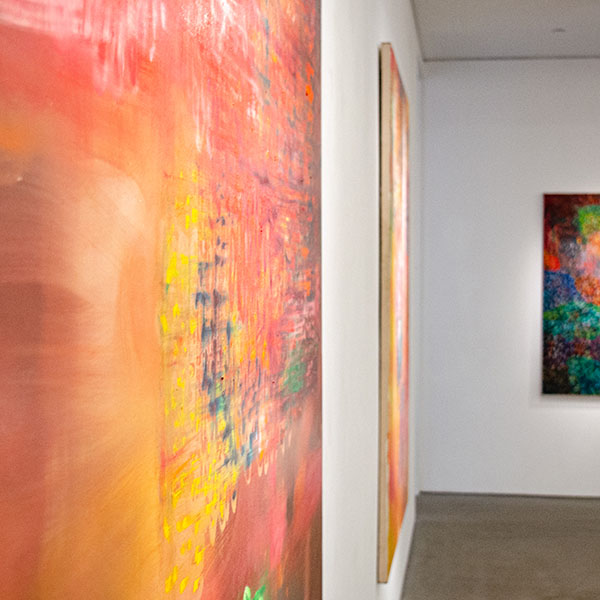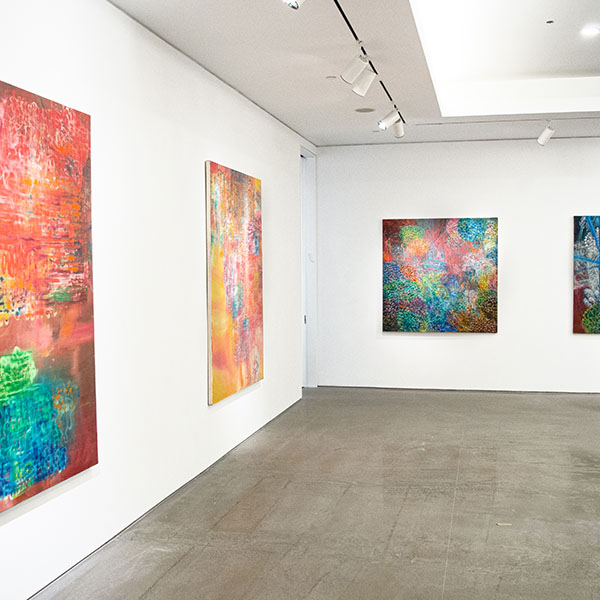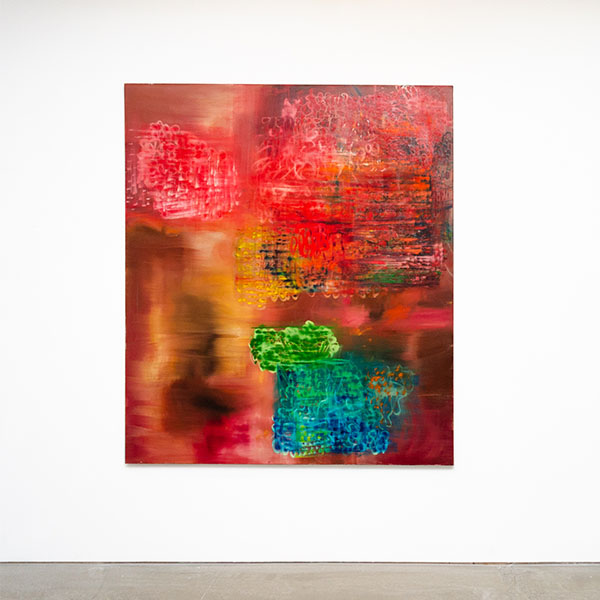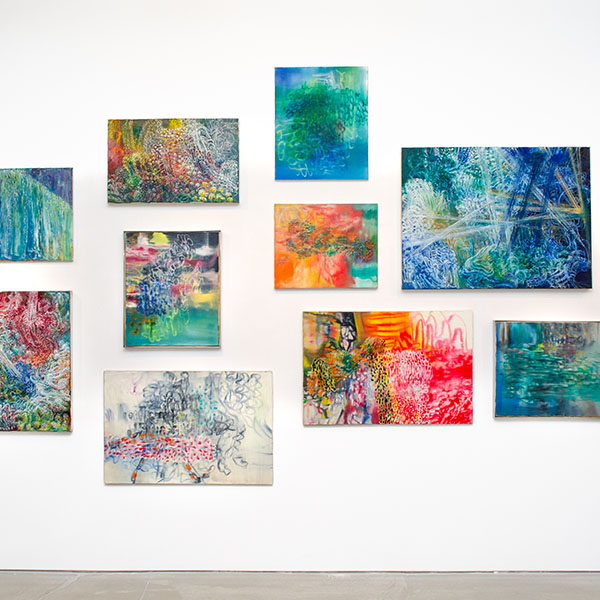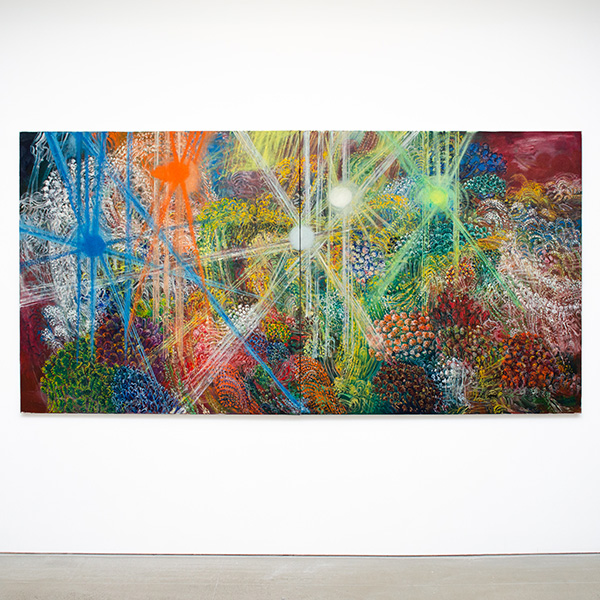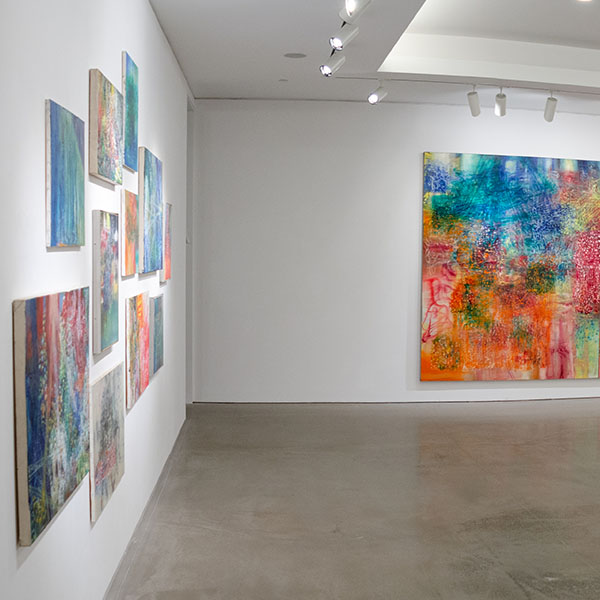Nachume Miller - Suns & Illusions
The expansive “Suns & Illusions” series was created at a critical period of acclaimed artist Nachume Miller’s life. Made whilst battling brain cancer in his late forties, this series of large scale paintings takes a very different tone from his earlier works—emerging from darker, more dystopian themes to a more transcendental, naturalistic perspective, an homage to the natural world. The sun becomes a focal point of this series, with the sun’s rays “dispens[ing] over the earth: through clouds, under the water—beams as they play over the surface of landscapes,” as curator Mara Williams wrote upon the creation of these works. The brightly colored, almost mystical scenes of a natural world are not necessarily representative of what is before us, but perhaps more so, what it is inside us—an inner landscape through the forms of nature. Miller’s reverence for the natural world in these complex and tangled, yet spiritual, scenes is a powerful and poignant motif at the end of this artist’s life on earth.
Miller came to prominence in New York City’s SoHo neighborhood—at the time, a rich environment for artists, where vacant lofts no longer wanted by industry became work-home studios. At 29 years old, he became one of the youngest artists to present work at the Guggenheim Museum in Young American Artists: 1978 Exxon National Exhibition. A decade later, The Museum of Modern Art held Miller’s first solo show at a major institution. His work remains in the collection of both museums, amongst others.
Born in Germany and raised in Holon, Israel, Miller was the son of Holocaust survivors. This history, alongside his father who was a prolific woodworker, had a great influence on the artist. By the age of 16, he was painting elaborate surreal landscapes referencing religion, politics, the art historical canon, and the recent history of modern art. His earlier works show influences from artists such as Hieronymus Bosch, Salvador Dalí, and Francisco de Goya. Later, to old masters like da Vinci, Rembrandt, and Rubens to the landscapes of Turner and more recent stylistic influences, such as Francis Bacon and Robert Rauschenberg. Miller was enlisted in the Israeli Army and fought in the 1973 Yom Kippur War. That same year, he received a scholarship from the Israeli-American Cultural Foundation. He married his girlfriend, Ruth, and moved to New York in 1974 to study at the School of Visual Arts. In 1977, he joined the faculty to teach painting and drawing.
Reviewing the MoMA show for Artforum in 1988, art critic Donald Kuspit described Miller’s work as that which “convey[s] the artist’s compulsion.” Kuspit continues: “It is this quality that finally prevents the flux form from betraying itself completely as an invented spectacle. The work becomes hallucinatory—transfixing and full of posthypnotic suggestions.” It’s these hypnotic, trancelike gestures that move through Miller’s canvases with intense force that Cara McCarty, curator of his solo show at MoMA, described as “form in an extreme state of flux.”
